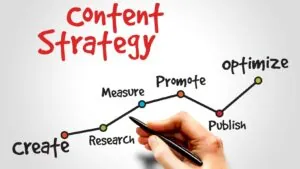The rapid advancement of technology brings numerous benefits but also introduces new security challenges. Understanding these emerging tech trends for meetings and their security implications is crucial for staying ahead in the digital age. Today, we will discuss some key technologies and their associated security risks.
1. Artificial Intelligence and Machine Learning
Artificial Intelligence (AI) and Machine Learning (ML) transform industries by automating tasks, improving decision-making, and enhancing user experiences. However, these technologies also introduce significant security risks. A primary concern is data poisoning, where attackers tamper with the data used to train AI models, causing them to produce incorrect or harmful results. Adversarial attacks are another risk, where inputs designed to deceive AI systems cause them to make erroneous decisions.
To mitigate these risks, it is essential to implement robust data validation processes, use secure data sources, and continuously monitor AI systems for unusual behavior. Additionally, incorporating AI-specific security measures, such as adversarial training, can help enhance the resilience of AI models against attacks.
2. Quantum Computing
Quantum computing has the potential to revolutionize fields like cryptography, materials science, and artificial intelligence by solving complex problems much faster than classical computers. However, this power also poses significant security threats, particularly to current encryption methods. Quantum computers could break widely used cryptographic algorithms, rendering much of today’s encrypted data vulnerable to decryption.
Preparing for a post-quantum world involves developing and implementing quantum-resistant cryptographic algorithms. Organizations should start assessing their cryptographic infrastructure and begin transitioning to quantum-safe algorithms to ensure long-term data security. Professionals can stay ahead by earning a masters degree in cybersecurity to understand and mitigate these risks.
3. Internet of Things (IoT)
The Internet of Things (IoT) connects devices that are used daily to the Internet, enabling smarter homes, cities, and industries. Despite its advantages, IoT presents numerous security challenges. Many IoT devices have limited processing power and storage, making it difficult to implement robust security measures. Additionally, the lack of standardization in IoT security practices leads to inconsistent protection levels across devices.
Common IoT security risks include device vulnerabilities, insecure communication channels, and inadequate update mechanisms. To address these issues, manufacturers should prioritize security during the design phase, implement strong encryption protocols, and ensure devices can receive regular firmware updates. Users should also be educated on securing their IoT devices, such as changing default passwords and regularly updating software.
4. Blockchain Technology
Blockchain technology, known for its use in cryptocurrencies like Bitcoin, has applications beyond digital currencies, including supply chain management, voting systems, and secure data sharing. Despite its promise, blockchain faces security challenges such as 51% attacks, where a group of miners controls most of the network’s computing power, allowing them to manipulate the blockchain. Smart contract vulnerabilities are another concern, as flawed code can be exploited to steal funds or manipulate transactions.
To enhance blockchain security, conducting thorough audits of smart contracts, implementing decentralized governance models, and encouraging collaboration between developers and security experts is crucial. Developing robust consensus mechanisms can also help prevent attacks that target the blockchain’s integrity.
5. 5G Technology
5G technology promises faster internet speeds, lower latency, and greater connectivity, enabling advancements like autonomous vehicles, smart cities, and telemedicine. However, the increased connectivity and complexity of 5G networks introduce new security risks. One major concern is the expanded attack surface, as more devices connected to the network create more entry points for attackers. Potential espionage is another risk, with fears that malicious actors could exploit vulnerabilities in 5G infrastructure for surveillance or data theft.

Securing 5G networks requires a multi-layered approach, including strong encryption, robust network segmentation, and continuous monitoring for unusual activity. Collaboration between governments, telecom providers, and cybersecurity experts is essential to effectively address these security challenges.
6. Augmented Reality (AR) and Virtual Reality (VR)
Augmented Reality (AR) and Virtual Reality (VR) technologies are transforming gaming, education, and healthcare industries. However, these technologies also present unique security and privacy challenges. AR and VR applications often collect extensive user data, including physical movements, environment scans, and personal preferences. If this data is not properly secured, malicious actors can exploit it.
Privacy risks include unauthorized data collection and the potential for AR/VR systems to be used for surveillance. To mitigate these risks, developers should implement robust data transmission and storage encryption, regularly update software to patch vulnerabilities and ensure transparent user consent practices. Users should be aware of the collected data and have control over its use.
7. Autonomous Vehicles
Autonomous vehicles, including self-driving cars and drones, are set to revolutionize transportation. These vehicles use complex AI systems, sensors, and connectivity to navigate and operate. However, the integration of these technologies introduces significant security challenges. One of the primary concerns is the potential for hacking, which could lead to vehicle theft, accidents, or misuse for malicious purposes.
Manufacturers must prioritize cybersecurity in the design and development phases to secure autonomous vehicles. This includes using secure communication protocols, regularly updating software, and implementing strong authentication mechanisms. Additionally, regulatory bodies should establish stringent security standards for autonomous vehicles to ensure public safety and trust.
8. Cloud Computing
Cloud computing has become essential for businesses, offering scalability, flexibility, and cost savings. However, security risks increase as more data and applications move to the cloud. Key concerns include data breaches, insider threats, and vulnerabilities in shared environments. Cloud providers and users share the responsibility of securing cloud environments.

Best practices for cloud security include implementing strong access controls, using encryption for data at rest and in transit, and regularly monitoring for suspicious activities. Organizations should also conduct thorough security assessments of their cloud providers and ensure compliance with relevant regulations and standards.
9. Biotechnology and Wearable Devices
Biotechnology and wearable devices are advancing healthcare by enabling real-time health monitoring, personalized treatments, and enhanced diagnostics. However, these technologies also raise significant security and privacy concerns. Wearable devices collect sensitive health data, which, if compromised, can lead to identity theft, insurance fraud, and other malicious activities.
Manufacturers should implement robust security measures to protect health data, such as encryption, secure firmware updates, and strong authentication mechanisms. Users should be educated about securing their devices and regularly updating software. Additionally, regulatory frameworks should be established to ensure the safe use of biotechnological devices.
Conclusion
Emerging technologies such as AR, VR, autonomous vehicles, cloud computing, biotechnology, and cyber-physical systems offer immense potential but also introduce significant security challenges. Understanding these risks and implementing robust security measures is crucial for leveraging the benefits of these technologies while protecting against threats. As technology evolves, staying informed and proactive about security implications will be essential for individuals and organizations. Continuous learning, collaboration, and adaptation are key to navigating the complex landscape of emerging tech and ensuring a secure digital future.














































































































